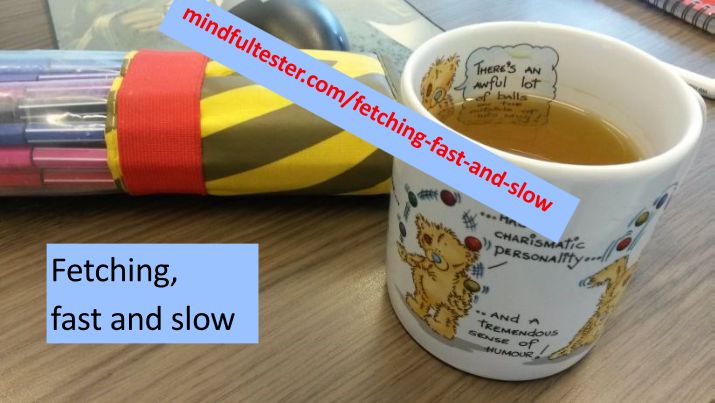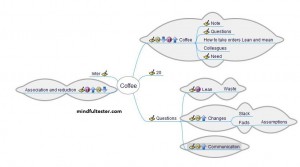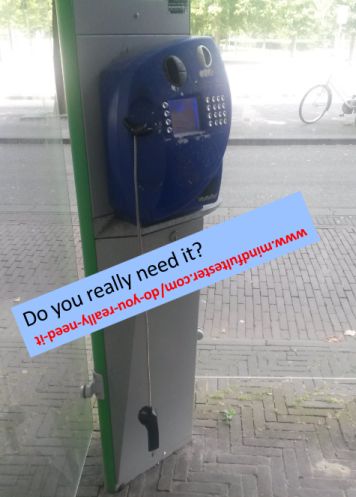Let’s start with a simple observation of the following sentence:
Do I communicate (without a mouse)?
If you were fast, then there is a high probability you were thinking: “The word mouse is used by the author instead of the word mouth. So the spelling is wrong.”
If you thought hard, then there is a high probability you were thinking: “The mouse is probably a computer accessory. So the question could be rephrased as follows: do I communicate (without a computer)?”
I once heard a great story from an experienced test manager René. He told me, that his project members were communicating with emails. It did not even change, when they sat in the same room. He just set a daily limit of 3 emails, which they could send. This lead to more face to face communication, which improved the project spirit and group cohesion significantly.
Breakdown
In the introduction I used a mind trick on you. This is a trick, which can be used to confuse people. For the fast observations System 1 is used in most cases. This way of thinking provides fast, almost effortless way to digest information. Like walking to the office.
For the thoughtful observations System 2 is used. Doing complex operations like testing in the office. Both systems have been discussed in depth by Daniel Kahneman in the book Thinking, fast and slow. The title of this blog is based on the title of this book. And fetching is short for fetching coffee.
In March 2015 James Bach introduced the term testopsy. He analysed, what the tester did during a test. I thought about a post autopsy or blog post autopsy. It is tempting to concatenate the strings post and opsy. But as a Dutch native speaker I do not take any chances.
Just let me perform an autopsy for a blog post: how did I construct the blog post Do I communicate (without a mouse )?
Because I wrote the blog post, I have the original mind map, which was used as a basis. In the following picture I highlight, which System is used and the corresponding trends. System 2 is used in certain parts of the blog post and System 1 in other parts.
A manager would say:
“This is nice. And that’s all. The relationship between the parts of the blog post and Systems is meager at most. ”
Time for a graph make over.
Graph SOS
There is a British car program, in which they deconstruct and construct a beloved car wreck. For people, who earn it. And as a reader you definitely earn a better graph.
In case you did not read this blog post Do I communicate (without a mouse)?, please do. It makes the following graph understandable.
In the graph above I show my usage of Systems 1 and 2 on the vertical axis. The horizontal axis shows the different parts of the post in reading order. So it is possible to observe, that System 2 is used less and less until the end of story.
A manager might be more interested in this graph than the previous one:
“So what you are basically stating, is, that people use System 2 for learning. And participating.”
Or even better:
“I wonder, whether System 1 is used during the meetings in my company .”
Breakdown 2
Over the years I saw a recurring pattern. Every time I boarded a project or got a new room, I had to change my coffee fetching list. And somehow I reduced the spent time. I eliminated waste: it looked to me, that I was lean. This story I carried with me for more than a year. Telling and retelling it to myself over and over again.
Then it was time to put it in a blog post. I started with the mind map with the condensed and descriptive title Coffee. The first branch contained the story. Then I added two funny anecdotes to add some flavour to the blog post.
In the meantime I had lost my favourite mug out of view: a bear, who juggles, while praising the owner of the mug. (That’s me.) After I had found the mug, I made a photo with my smartphone. The mug was on the foreground and my markers right behind them. Then I noticed my mouse: it was behind the markers and not on the photo. So I changed the view for the next picture: the mouse is on the background. Unreachable for normal use.
A few days later I noticed, that I was missing a photo with a funny text for the blog post. I needed something, that could be connected with coffee or tea. Then I remembered the picture of my mug, which was a major obstruction for using my mouse. A thought about communication entered my mind: Do I always need a mouse for communication? It was relatively simple to write an introduction from this point.
Most stories have a lesson at the end. I think, that it is highly predictable (and a bit boring). I wanted to give the reader a choice out of 3 lessons. But that was not entertaining enough. So I placed myself in the spotlights (again). If I could let my voices speak, then I would have a more recognisable situations instead of some abstract and concise questions without any explanation. I took the following voices:
- The lean machine in me, cutting wastes on his way to the future
- A woman constantly looking for her needs, while brainstorming and chatting
- A service desk agent concerned about an implementation of a new functionality
- A curious software tester looking for clues.
I somehow used a Dutch style form: the circle is round. I started with the title Do I communicate (without a mouse)? And ended with the same question.




